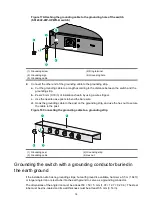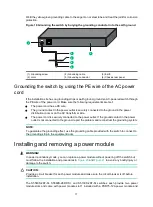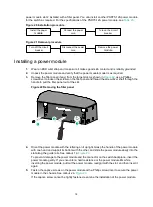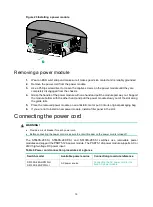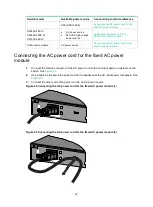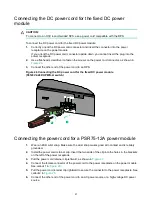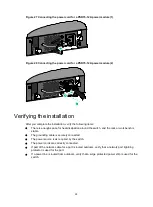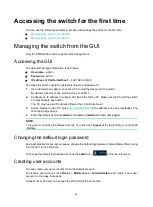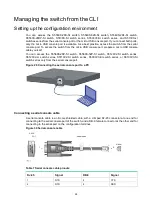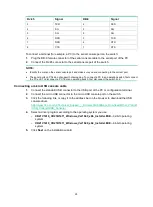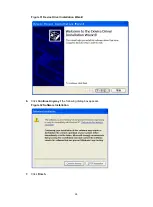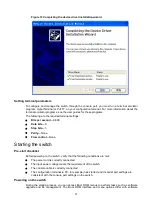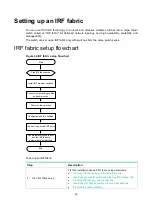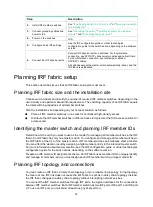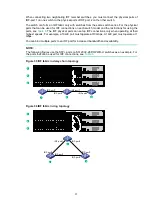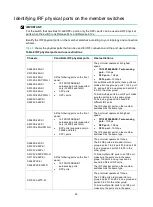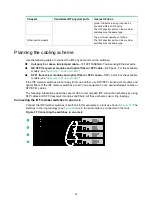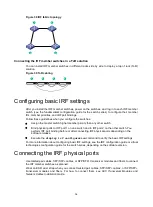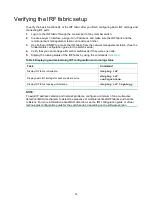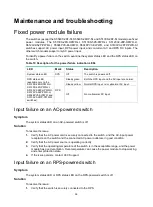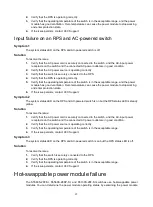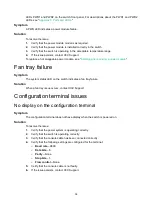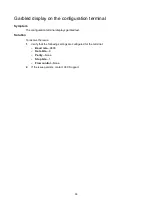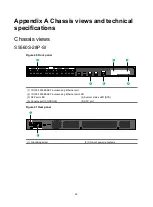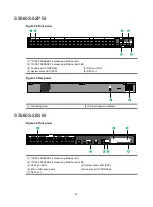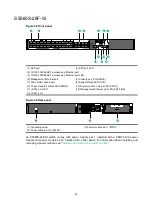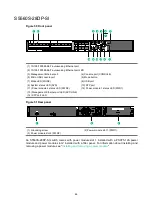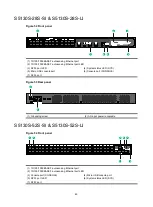
30
Step
Description
2.
Install IRF member switches.
See "
Installing the switch in a 19-inch rack
."
3.
Connect grounding cables and
power cords.
See "
Installing and removing a power
."
4.
Power on the switches.
N/A
5.
Configure basic IRF settings.
See the IRF configuration guide or virtual technologies
configuration guide for the switch series, depending on the software
version.
6.
Connect the IRF physical ports.
Connect IRF physical ports on switches. For long-distance
connection, use SFP/SFP+ transceiver modules and optical fibers.
For short-distance connection, use twisted-pair cables or
SFP/SFP+ cables.
All switches except the master switch automatically reboot, and the
IRF fabric is established.
Planning IRF fabric setup
This section describes issues that an IRF fabric setup plan must cover.
Planning IRF fabric size and the installation site
Choose switch models and identify the number of required IRF member switches, depending on the
user density and upstream bandwidth requirements. The switching capacity of an IRF fabric equals
the total switching capacities of all member switches.
Plan the installation site depending on your network solution, as follows:
•
Place all IRF member switches in one rack for centralized high-density access.
•
Distribute the IRF member switches in different racks to implement the ToR access solution for
a data center.
Identifying the master switch and planning IRF member IDs
Determine which switch you want to use as the master for managing all member switches in the IRF
fabric. An IRF fabric has only one master switch. You configure and manage all member switches in
the IRF fabric at the CLI of the master switch. IRF member switches automatically elect a master.
You can affect the election result by assigning a high member priority to the intended master switch.
For more information about master election, see the IRF configuration guide or virtual technologies
configuration guide for the switch series, depending on the software version.
Prepare an IRF member ID assignment scheme. An IRF fabric uses member IDs to uniquely identify
and manage its members, and you must assign each IRF member switch a unique member ID.
Planning IRF topology and connections
You can create an IRF fabric in daisy chain topology or more reliable ring topology. In ring topology,
the failure of one IRF link does not cause the IRF fabric to split as in daisy chain topology. Instead,
the IRF fabric changes to a daisy chain topology without interrupting network services.
You connect the IRF member switches through IRF ports, the logical interfaces for the connections
between IRF member switches. Each IRF member switch has two IRF ports: IRF-port 1 and IRF-port
2. To use an IRF port, you must bind at least one physical port to it.

